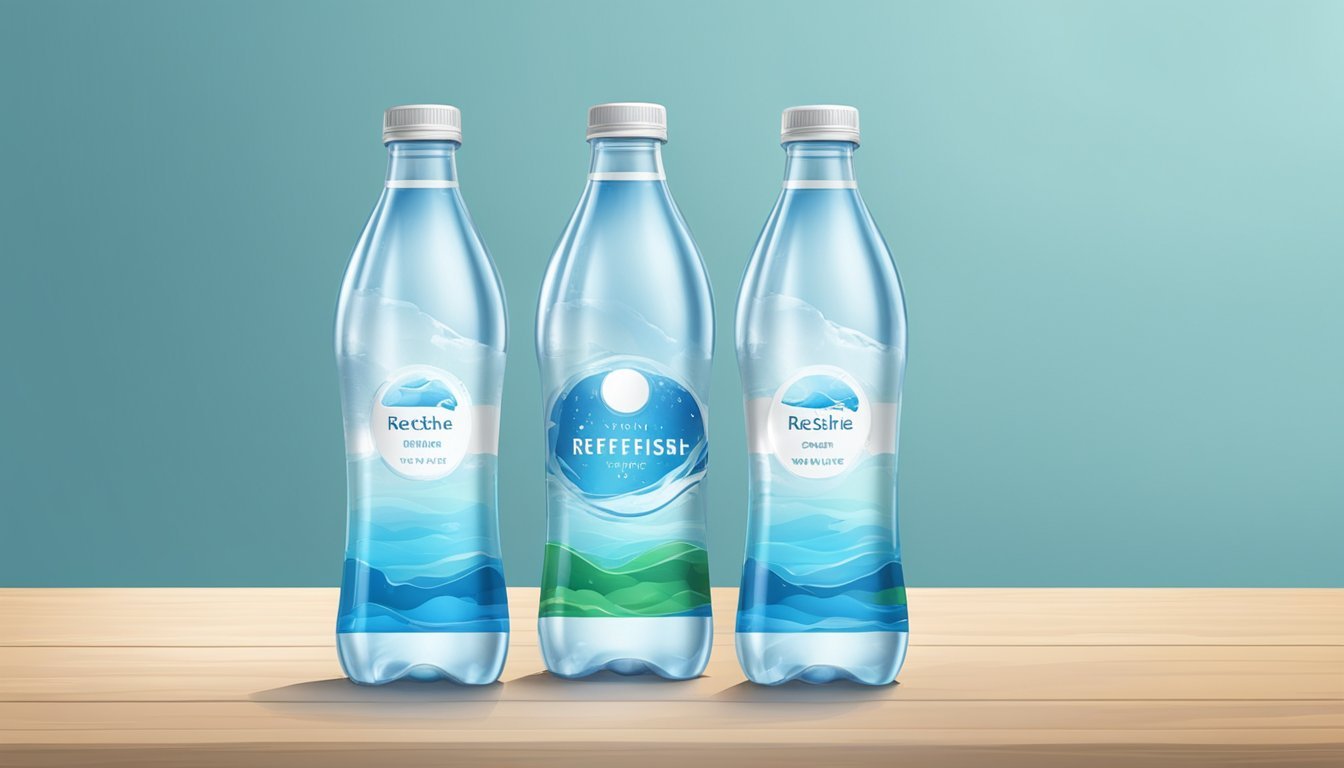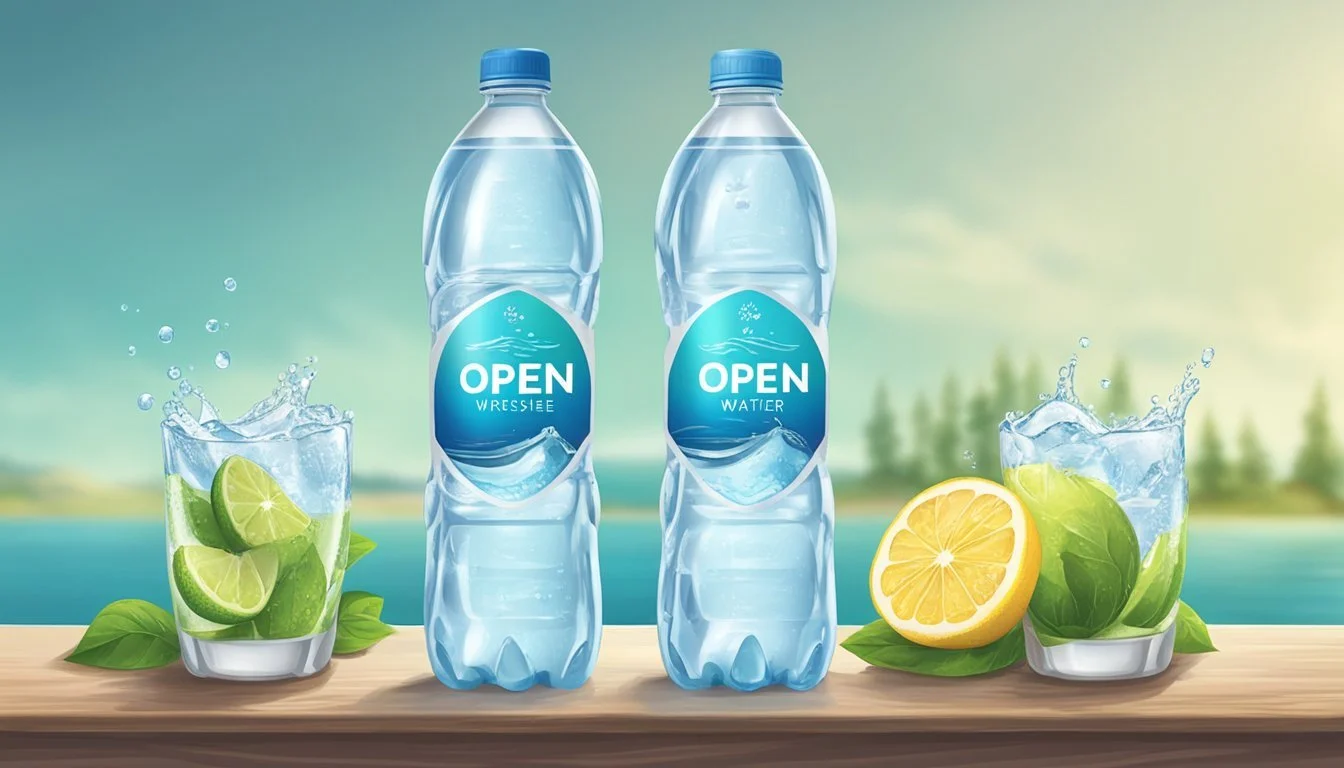Open Water vs. Refreshe
An In-Depth Comparison of Bottled Water Brands
Choosing the right bottled water can significantly impact your hydration experience, especially when considering options like Open Water and Refreshe. Both brands are known for their unique qualities, making the decision a matter of personal preference and specific needs. Open Water stands out with its eco-friendly packaging and a crisp, refreshing taste, making it a top choice for environmentally conscious consumers.
Refreshe, on the other hand, offers artesian water with a balanced pH of 7.4 and zero calories, fats, or carbohydrates. This makes it a practical option for those seeking straightforward hydration without any additives. Its clean, neutral taste appeals to a wide range of palates, providing pure refreshment with every sip.
Understanding the differences between these two brands can guide you in making the best choice for your lifestyle. Whether you prioritize sustainability or the pure essence of water, both Open Water and Refreshe deliver quality hydration.
What is Bottled Water?
Bottled water refers to any drinking water packaged in plastic or glass bottles. It includes a variety of types that differ in source, filtration, and mineral content.
Understanding Bottled Water
Bottled water is produced to offer convenience and clean drinking water on the go. Whether sourced from springs, wells, or municipal supplies, the water undergoes processes to ensure safety and improve taste. Unlike tap water, bottled versions often include added minerals to enhance flavor and may be carbonated.
Due to its packaging, it is readily available and portable. Brands may market specific attributes like pH level or natural origins to appeal to health-conscious consumers. The Environmental Protection Agency (EPA) regulates tap water, while the Food and Drug Administration (FDA) oversees bottled water.
Types of Bottled Water
There are various types of bottled water available, each with distinct characteristics:
Spring Water: Sourced from underground formations and must flow naturally to the surface or be collected through a borehole.
Mineral Water: Contains a defined amount of minerals per liter without any added minerals.
Purified Water: Undergoes processing like distillation or reverse osmosis to remove impurities.
Sparkling Water: Contains carbon dioxide added during bottling for a fizzy effect.
Artesian Water: Drawn from a confined aquifer where the water level stands above the top of the aquifer.
Selecting the right type depends on personal preference and specific health benefits.
Regulations and Standards
Regulations for bottled water are stringent to ensure it meets safety standards. The FDA monitors bottled water production, focusing on contamination levels, labeling, and bottling practices. Standards set by the FDA must be as rigorous as those by the EPA for municipal tap water.
Bottled water must undergo regular testing to confirm it is free from harmful bacteria, minerals, and chemicals. Additionally, labels must accurately reflect water sources and processing methods, giving consumers detailed information on what they are drinking.
Source and Filtration Processes
Both Open Water and Refreshe derive their products from distinct sources and employ rigorous filtration methods to ensure purity. These processes determine the mineral content and overall quality, impacting the taste and health benefits of the water.
Natural Sources and Collection
Open Water sources its water from artesian wells, tapping into naturally filtered groundwater. These wells provide a consistent flow of mineral-rich water. Refreshe, on the other hand, primarily uses municipal sources, often treated city water.
Spring water from natural springs is prized for its purity and natural mineral content. Brands such as Essentia often combine multiple sources to enhance their water quality.
Artesian wells ensure that the water remains uncontaminated by surface pollutants.
Filtration and Purification Methods
Open Water uses a combination of reverse osmosis, UV treatment, and ozonation to remove contaminants. Reverse osmosis is a critical step, removing even the smallest particles and dissolved solids.
Refreshe employs methods like activated carbon filtration and ozonation. Chlorination might also be used for disinfection. Several brands, including Aquafina and Essentia, use similar purification methods to achieve high standards.
Testing for contaminants is rigorous, adhering to the guidelines set by the Safe Drinking Water Act.
Water Quality and Contaminants
Water quality measures include mineral content, taste, and the absence of harmful contaminants. Open Water often includes natural minerals preserved through minimal processing.
Refreshe focuses on removing a wide range of contaminants, ensuring the water is safe and clean. Regular testing for contaminants such as lead and bacteria is standard.
High mineral content, from sources like artesian wells, can enhance both flavor and health benefits. Both brands strive for safe drinking water, maintaining transparency about their processes.
Comparison of Open Water and Refreshe
Open Water and Refreshe differ in taste, health benefits, and cost. This analysis covers their flavor profiles, mineral content, and price points. Here are the key findings.
Taste Profile Analysis
Open Water offers a crisp, clean taste that appeals to those who prefer a neutral flavor. It mimics the taste of purified tap water but with the added assurance of being contaminant-free. This is largely due to its various filtration stages, including reverse osmosis which removes impurities effectively.
Refreshe, on the other hand, provides a slightly different experience. It is also clean but has a subtle mineral taste due to its artesian water source. This might appeal to those who enjoy a noticeable but mild mineral presence in their water. The refined blend of minerals and electrolytes gives Refreshe a slightly distinct mouthfeel compared to Open Water.
Health and Mineral Composition
Both brands focus on purity but differ in mineral content. Open Water is purified through reverse osmosis, removing almost all dissolved solids, including essential minerals. This results in a very low mineral content, suitable for those who need water with minimal substances.
Refreshe, sourced from artesian wells, retains some natural minerals like calcium and magnesium. This can be beneficial for maintaining electrolyte balance. The pH level of Refreshe is 7.4, which is neutral and good for daily hydration.
In terms of sodium, both brands keep it at negligible levels, making them suitable for low-sodium diets. Potassium content is also minimal, ensuring that both waters do not interfere with nutrient balances in the body.
Price Considerations
When evaluating cost, Open Water tends to be priced at a premium. This is reflective of its rigorous purification and environmentally friendly packaging. It's often marketed towards eco-conscious consumers willing to pay extra for sustainable options.
Refreshe is typically more affordable, making it accessible to a wider audience. Despite its lower price, it maintains good standards of purity and taste. This makes it a competitive choice for budget-conscious shoppers.
In summary, Open Water's higher price reflects its purification and sustainability efforts. Meanwhile, Refreshe provides a balance of affordability and quality.
Environmental Impact
The environmental implications of bottled water are significant, affecting plastic waste and resource management. Consumers are increasingly weighing these factors when choosing between brands like Open Water and Refreshe.
Bottled Water and Plastic Use
Plastic waste from bottled water is a major environmental concern. Producing plastic bottles consumes a lot of water and energy, with three times as much water required to make a bottle as it can hold. The disposal process further exacerbates this issue, as many plastic bottles end up in landfills or oceans.
Recycling rates are insufficient to counteract the growing accumulation of plastic waste. Some estimates suggest that only a fraction of plastic bottles are recycled efficiently. This adds to the pollution problem, impacting both wildlife and human health.
Sustainability and Source Management
The sustainability practices of bottled water companies can vary widely. Some brands, like Open Water, aim to reduce their environmental footprint by using recyclable aluminum bottles and sourcing water responsibly. Others may not prioritize sustainability, leading to resource depletion and environmental strain.
Proper source management ensures that water extraction does not negatively affect local ecosystems. Over-extraction in areas like Flint, Michigan, has shown the dire consequences of poor management, including water scarcity and contamination. Consumers should consider the sustainability credentials of brands before purchase.
Alternatives and Consumer Choices
Consumers have several alternatives to reduce the environmental impact of bottled water. Reusable water bottles and water filters are viable options that can significantly decrease plastic waste. By investing in a reusable bottle, individuals can help reduce the demand for single-use plastics.
Programs promoting tap water safety, like the initiatives by the Environmental Working Group, encourage people to trust and use local tap water. In areas where water safety is a concern, such as Flint, Michigan, reliable filtration systems can provide a safer and more sustainable option.
Adopting these alternatives can lead to substantial environmental benefits, lessening the overall reliance on plastic bottles and promoting a healthier planet.
The Role of Bottled Water in Society
Bottled water plays a significant role in modern society through various aspects such as emergency response, daily convenience, and consumer perceptions. Understanding these factors can help in appreciating how bottled water impacts our lives.
Emergencies and Natural Disasters
In times of natural disasters or other emergencies, bottled water becomes a critical resource. When local water supplies are compromised due to events like hurricanes, earthquakes, or industrial accidents, bottled water is often the quickest and most reliable solution for clean drinking water.
Companies in the bottled water industry, sometimes coordinated by governments or humanitarian organizations, ensure that affected communities receive the necessary supplies. This rapid distribution helps prevent dehydration and disease in crisis situations. The International Bottled Water Association often collaborates in these humanitarian efforts, reflecting the industry's commitment to public health and safety.
Convenience and Lifestyle
Convenience is a primary driver of bottled water consumption. For many consumers, the ease of access to bottled water—available at virtually every retail outlet—aligns with busy lifestyles that demand quick and portable hydration solutions.
This convenience extends to specific types of bottled water, such as carbonated or flavored varieties, which cater to consumers looking for options beyond plain water. Bottled water fits seamlessly into dynamic environments like offices, gyms, and outdoor activities, providing a practical and hygienic solution when tap water is less available or preferred.
Public Perception and Trends
Public perception of bottled water varies widely and influences consumption trends. Many consumers perceive bottled water as being of higher purity and better taste compared to tap water, driving increased bottled water purchases. However, there is a growing awareness of the environmental implications and economic costs associated with it.
Studies have highlighted that a significant portion of bottled water is derived from tap sources, challenging stereotypes about its superiority. Customers are becoming more conscious of sustainable practices, and some companies are responding by improving recycling efforts and sourcing methods. As trends evolve, consumer choices are increasingly shaped by these environmental and ethical considerations.
Bottled water's role in society is multifaceted, addressing immediate needs in emergencies while also fitting into daily conveniences and broader consumer perceptions and trends.
Safety and Health Considerations
When comparing Open Water and Refreshe, it's important to explore the safety and health aspects of each brand. This includes their chemical composition, potential health risks, nutrient content, and best practices for consumption.
Chemical Composition and Potential Risks
Open Water is rigorously filtered and packaged in BPA-free cans, which minimizes the risk of chemical leaching. It is sourced from natural springs and is free from significant levels of lead or harmful bacteria due to stringent quality control measures.
Refreshe, commonly bottled from municipal sources, undergoes thorough purification processes. However, there have been occasional concerns regarding the potential for toxins from plastic contamination.
Regular testing ensures both brands comply with regulatory standards, though consumers should remain vigilant about proper storage to avoid potential side effects. Neither brand is known to contain dangerous levels of fluoride, which is a common concern.
Nutrient Content and Health Benefits
Open Water and Refreshe typically contain very few added nutrients, as they aim to provide pure drinking water. They do, however, contain trace minerals that can contribute to daily dietary needs, although these levels are usually minimal.
Fluoride content in bottled water is generally lower than in tap water, which may be preferable for individuals concerned about fluoride intake.
In terms of health benefits, drinking adequate water from either brand supports bodily functions, maintaining hydration and promoting immune system health. Neither brand has been linked to cancer risk or other severe health issues.
Best Practices for Consumption
When consuming Open Water or Refreshe, proper storage is essential. Keep bottles and cans in cool, dark places to avoid bacterial growth and minimize any risk of chemical leaching from plastic.
Consumers should also check for expiry dates to ensure safety.
Daily consumption should be balanced as part of a varied diet, without relying solely on bottled water. For those concerned about environmental impact, Open Water's use of recyclable aluminum cans may be a preferable choice.
Innovations and Future Directions
Advancements in bottled water technology and market trends are transforming consumer choices and the water industry. This section explores developments in filtration methods, emerging brands, and the role of consumer education in shaping preferences.
Technological Advancements in Filtration
Modern filtration techniques are enhancing the purity and taste of bottled water. Reverse osmosis is a key technology, known for its ability to remove contaminants. Brands using this method are praised for delivering high-quality water.
Mitte is innovating with their devices that remineralize purified water, adding back essential minerals. On the household front, the Brita pitcher remains popular for those who prefer to filter tap water. The incorporation of alkaline water aims to promote health benefits, such as improved hydration and balanced pH levels.
Emerging Brands and Market Dynamics
The bottled water market is vibrant with new entrants offering unique value propositions. Sparkling water brands, like LaCroix and Perrier, capitalize on the demand for flavored and carbonated options. Meanwhile, functional water brands infuse vitamins and electrolytes to appeal to health-conscious consumers.
Smart water bottles are gaining traction by integrating technology to track and encourage hydration. The smart water bottle market reached $8.35 billion in 2022, highlighting significant growth. Brands are increasingly focusing on sustainability by opting for nonplastic containers, like glass and aluminum, which are more environmentally friendly.
Consumer Education and Advocacy
Educating consumers about water quality is crucial in shaping buying decisions. Registered dietitian nutritionists play a role in spreading awareness about the benefits and potential drawbacks of various types of bottled water. They can guide consumers on choosing products that fit their health needs.
Advocacy for improved public water systems is growing, as many argue it provides a reliable and cost-effective alternative to bottled water. Additionally, there is a push for greater transparency in labeling, so consumers are better informed about the source and contents of their water.
Consumer education campaigns emphasize the importance of hydration and the environmental impact of bottled water, promoting more sustainable choices.
More About Open Water
Aqua Carpatica vs Open Water: Which Bottled Water is Better?
Cascade Mountain vs Open Water: Which Bottled Water is Better?
Core Hydration vs Open Water: Which Bottled Water is Better?
Crystal Geyser vs Open Water: Which Bottled Water is Better?
Hawaii Volcanic vs Open Water: Which Bottled Water is Better?
Hawaiian Springs vs Open Water: Which Bottled Water is Better?
Icelandic Glacial vs Open Water: Which Bottled Water is Better?
Mountain Valley Spring Water vs Open Water: Which Bottled Water is Better?
Nestle Pure Life vs Open Water: Which Bottled Water is Better?
Open Water vs Kirkland Signature: Which Bottled Water is Better?
Open Water vs Whole Foods 365: Which Bottled Water is Better?
Richard's Rainwater vs Open Water: Which Bottled Water is Better?
San Pellegrino vs Open Water: Which Bottled Water is Better?
Solan de Cabras vs Open Water: Which Bottled Water is Better?
Talking Rain AQA vs Open Water: Which Bottled Water is Better?
Whole Foods Italian Still Mineral water vs Open Water: Which Bottled Water is Better?
More About Refreshe
Cascade Mountain vs Refreshe: Which Bottled Water is Better?
Hawaiian Springs vs Refreshe: Which Bottled Water is Better?
Icelandic Glacial vs Refreshe: Which Bottled Water is Better?
Mountain Valley Spring Water vs Refreshe: Which Bottled Water is Better?
Nestle Pure Life vs Refreshe: Which Bottled Water is Better?
Refreshe vs Kirkland Signature: Which Bottled Water is Better?
Richard's Rainwater vs Refreshe: Which Bottled Water is Better?
Talking Rain AQA vs Refreshe: Which Bottled Water is Better?
Whole Foods Italian Still Mineral water vs Refreshe: Which Bottled Water is Better?







